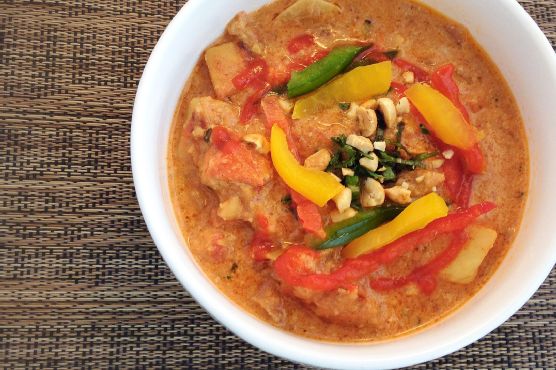Sign In Chef

By using our free meal planner (and the rest of spoonacular.com) you have to agree that you and only you are responsible for anything that happens to you because of something you have read on this site or have bought/cooked/eaten because of this site. After all, the only person who controls what you put in your mouth is you, right?
Spoonacular is a recipe search engine that sources recipes from across the web. We do our best to find recipes suitable for many diets — whether vegetarian, vegan, gluten free, dairy free, etc. — but we cannot guarantee that a recipe's ingredients are safe for your diet. Always read ingredient lists from the original source (follow the link from the "Instructions" field) in case an ingredient has been incorrectly extracted from the original source or has been labeled incorrectly in any way. Moreover, it is important that you always read the labels on every product you buy to see if the product could cause an allergic reaction or if it conflicts with your personal or religious beliefs. If you are still not sure after reading the label, contact the manufacturer.
We also attempt to estimate the cost and calculate the nutritional information for the recipes found on our site. Again, we cannot guarantee the accuracy of this information. Additionally, our nutrition visualizer that suggests that you limit sodium, sugar, etc., and get enough protein, vitamins, and minerals is not intended as medical advice. Similarly, our health tips are based on articles we have read from various sources across the web, and are not based on any medical training. The team behind spoonacular does not possess any medical qualifications and the information may be found to be incorrect or out of date based on future research. If you need help planning your diet or determining which foods (and recipes) are safe for you, contact a registered dietitian, allergist, or another medical professional.
Spoonacular is not responsible for any adverse effects or damages that occur because of your use of the website or any information it provides (e.g. after cooking/consuming a recipe on spoonacular.com or on any of the sites we link to, after reading information from articles or shared via social media, etc.)
× Image © Afrolems
Image © Afrolems
$3.53 per serving

124 likes

Ready in 45 minutes

Spoonacular Score: 99%
African Chicken Peanut Stew is an African main course. This recipe serves 1 and costs $3.53 per serving. Watching your figure? This gluten free and dairy free recipe has 1906 calories, 79g of protein, and 148g of fat per serving. Head to the store and pick up garlic cloves, chicken, groundnut, and a few other things to make it today. It is perfect for Autumn. This recipe from Afrolems has 124 fans. From preparation to the plate, this recipe takes approximately 45 minutes. Taking all factors into account, this recipe earns a spoonacular score of 99%, which is excellent. Users who liked this recipe also liked African Chicken Peanut Stew, African Chicken Peanut Stew, and African Chicken Peanut Stew.
Cabernet Sauvignon, Chablis, and Malbec are my top picks for Stew. Full-bodied red wines like malbec and cabernet sauvignon are the perfect accompaniment for beef stew. Fish stew probably calls for a white wine, such as chablis. The Tobacco Road "Tradition" Cabernet Sauvignon with a 5 out of 5 star rating seems like a good match. It costs about 44 dollars per bottle.
 Aromas of cedar box, dried tobacco leaves and mission fig lead to flavors of black cherries and sugar plums and a hint of vanilla.
Aromas of cedar box, dried tobacco leaves and mission fig lead to flavors of black cherries and sugar plums and a hint of vanilla.
» Get this wine on Amazon.com






































Read the detailed instructions on Afrolems